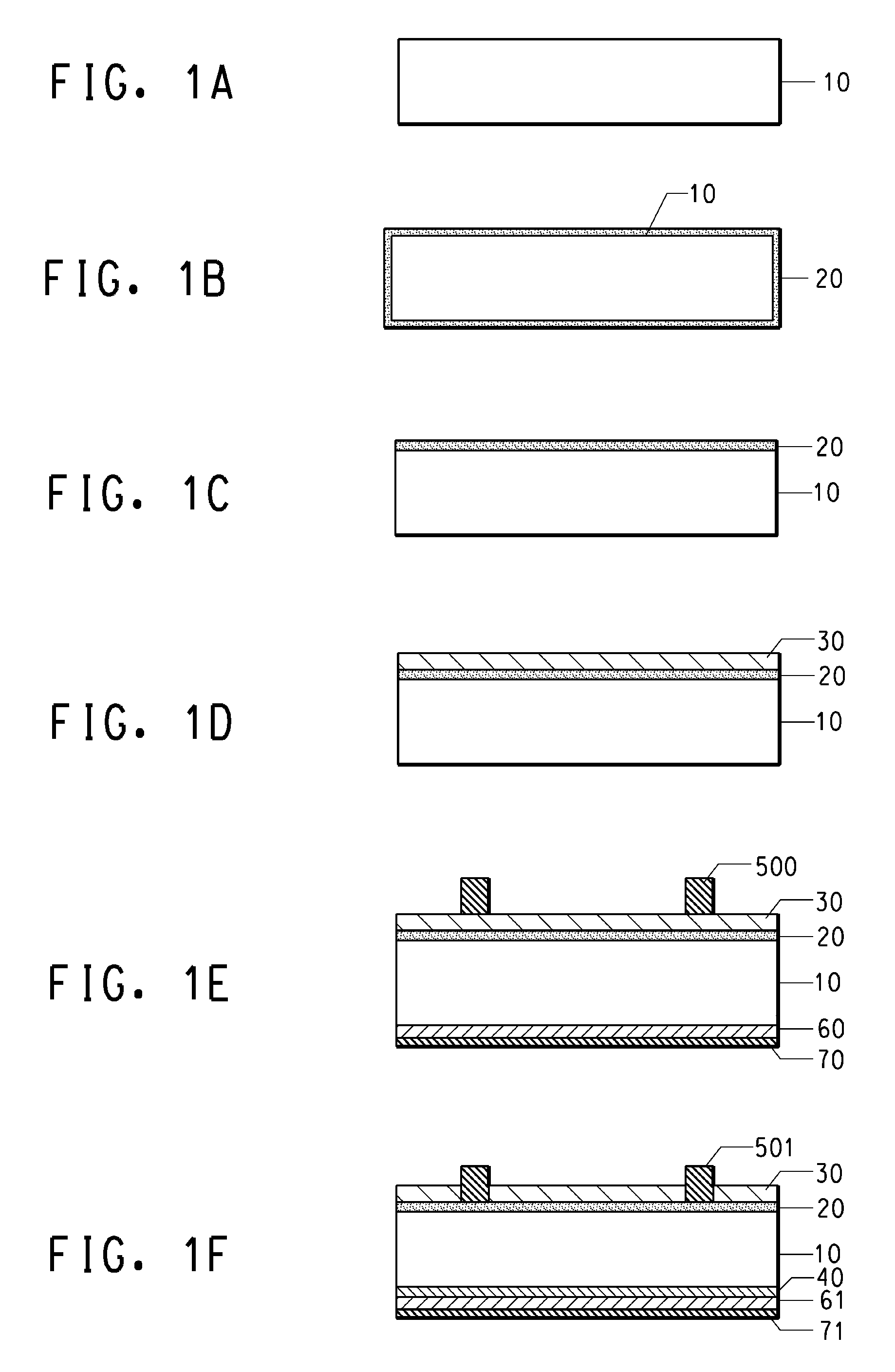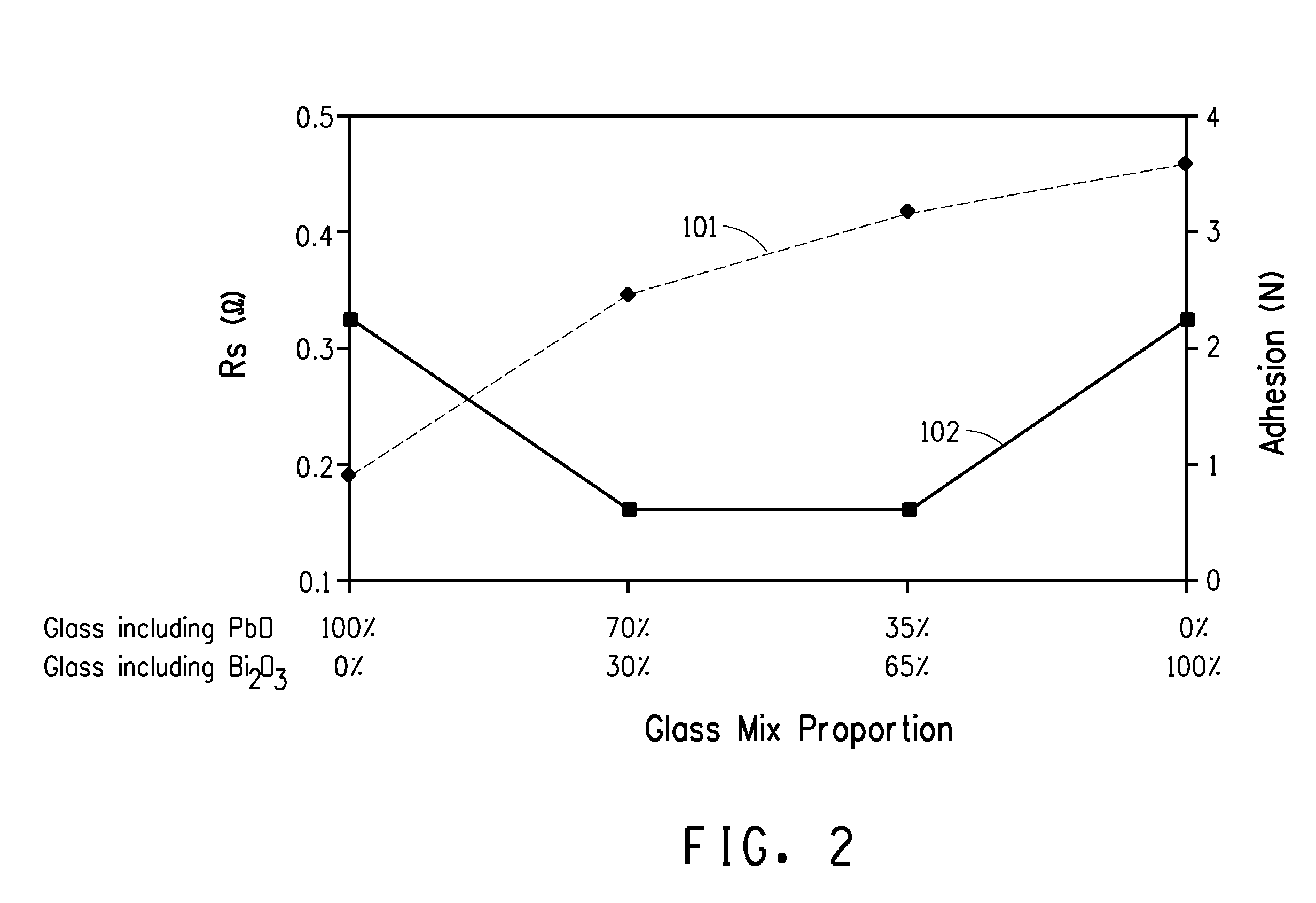Conductive paste for solar cell electrode
- Summary
- Abstract
- Description
- Claims
- Application Information
AI Technical Summary
Benefits of technology
Problems solved by technology
Method used
Image
Examples
examples
[0045]Examples of the electrode of the present invention is described herein below.
(A) Conductive Paste Preparation
[0046]Used material in the paste preparation and the content of each component are as follows.
i) Electrically functional conductive powder: A mixture of 24% of spherical silver powder [d50 2.3 μm as determined with a laser scattering-type particle size distribution measuring apparatus] and 56% of flake silver powder [d50 2.9 μm] were used. The total content of the silver powder was 80 wt % of the conductive paste.
ii) Glass Frit: The two sort of glass frits which were glass containing at least PbO and glass containing at least Bi2O3 were mixed in the conductive paste by different proportion as shown in table 1. The content of the total glass frits was 2 wt % of the conductive paste. Glass containing at least PbO further contained 28.0 wt % of SiO2, 4.7 wt % of Al2O3, 8.1 wt % of B2O3, glass containing at least Bi2O3 further contained 22.0 wt % of SiO2, 0.3 wt % of Al2O3,...
PUM
| Property | Measurement | Unit |
|---|---|---|
| Temperature | aaaaa | aaaaa |
| Depth | aaaaa | aaaaa |
| Electrical resistance | aaaaa | aaaaa |
Abstract
Description
Claims
Application Information
 Login to View More
Login to View More - R&D
- Intellectual Property
- Life Sciences
- Materials
- Tech Scout
- Unparalleled Data Quality
- Higher Quality Content
- 60% Fewer Hallucinations
Browse by: Latest US Patents, China's latest patents, Technical Efficacy Thesaurus, Application Domain, Technology Topic, Popular Technical Reports.
© 2025 PatSnap. All rights reserved.Legal|Privacy policy|Modern Slavery Act Transparency Statement|Sitemap|About US| Contact US: help@patsnap.com



